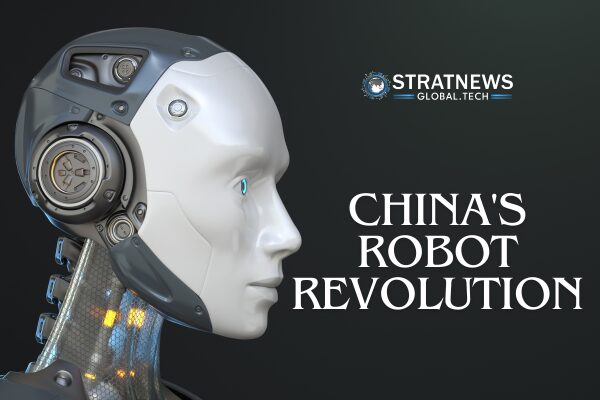China’s Robot Revolution: Strong Government Support
In a large warehouse on the outskirts of Shanghai, dozens of humanoid robots repeat basic tasks for hours. Guided by human operators, the machines practise folding clothes, making sandwiches, and opening doors. These routines are part of an ambitious plan by Chinese startup AgiBot, which aims to train robots that can work in daily life and industry. The warehouse operates 17 hours a day, generating vast amounts of data. This data is crucial for improving the robots’ performance and intelligence. According to Yao Maoqing, a partner at AgiBot, China’s robot revolution aims to have robots that can build themselves.
Strategic Importance for China
China sees humanoid robots as key to solving several pressing issues. These include rising trade tensions with the US, a shrinking workforce, and slower economic growth. President Xi Jinping underscored their importance during a recent visit to AgiBot, where he joked that robots could one day play football.
Humanoid robots have already demonstrated impressive agility. Some have run marathons and performed flips. But now, developers are focusing on enhancing their software, turning them into useful tools rather than just spectacles.
Chinese companies are pushing forward with strong government backing. Officials hope these robots will transform China’s manufacturing sector, giving it an edge over global competitors.
Massive Investment and Growing Industry
Beijing is investing heavily in this sector. More than $20 billion has been committed so far. Plans are also in place to create a $137 billion fund to support startups in AI and robotics.
Subsidies and support come from both national and local governments. For example, firms in Wuhan can receive up to 5 million yuan and free office space. In Shenzhen, a 10 billion yuan AI fund supports robotics innovation.
Costs are expected to drop quickly. Today, building a humanoid robot costs around $35,000. However, this could fall to $17,000 by 2030 if most parts are sourced within China. With its vast supply chain, China is well positioned to reduce costs and lead global production.
Data and AI: The Brains Behind the Bots
One of the biggest challenges in building intelligent robots is collecting the right data. Unlike other AI models, humanoid robots need to learn through physical interaction with the world. This makes high-quality, task-specific data essential.
AgiBot’s facility in Shanghai was created with government help and houses around 100 robots. These machines generate valuable training data every day. Similar sites are being built in Beijing and Shenzhen.
Other companies, like MagicLab, are already testing their robots in real workplaces. These machines perform tasks such as inspections and assembly. With AI models from firms like DeepSeek and Alibaba, robots are becoming better at understanding and reasoning through complex tasks.
Hardware Dominance and Global Impact
China holds a strong advantage in hardware. The country can produce up to 90% of the components needed for humanoid robots. This gives it a dominant position in global supply chains.
In 2024, 31 Chinese firms introduced 36 new humanoid robot models. In comparison, US companies launched just eight. Several Chinese manufacturers, including Unitree and UBTech, are entering mass production this year.
Some robots are already available for as little as 88,000 yuan. With this level of efficiency, many firms are turning to China for both components and complete systems.
Preparing for Workforce Shifts
Despite the excitement, China’s robot revolution raises concerns about job losses. Over 120 million people work in manufacturing in China. Lawmakers are now discussing how to manage this shift.
Suggestions include AI unemployment insurance, providing temporary support for displaced workers. Some experts believe robots will mainly take on dull, repetitive, or risky tasks—roles that are hard to fill.
At the same time, robots could help fill growing labour gaps, especially in elderly care. China’s ageing population is increasing demand for such services. New companies, like Ant Lingbo Technology, are now focusing on this sector.
In the future, robots could help organise homes, carry packages, or assist the elderly with daily tasks. As AgiBot’s Yao suggests, robots might soon be able to lift someone from bed to bathroom—bringing real-world value to advanced machines.
with inputs from Reuters


